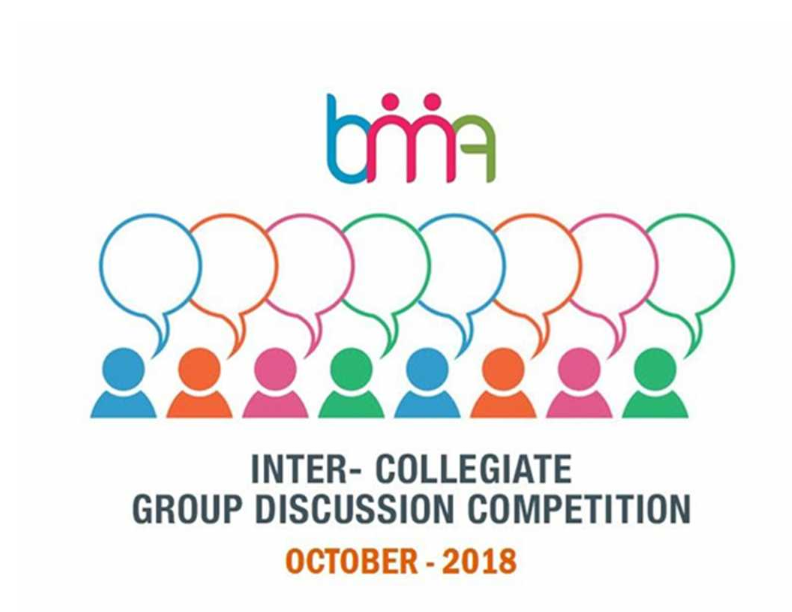
- This event has passed.
Inter Collegiate Group Discussion Competition 2018
October 27, 2018 @ 11:00 AM - 4:00 PM UTC+5.5

Event Details
- Reporting time for participants: 10:30 AM
- For any queries, contact us at info@bma-india.com
Participation Details
- No. of participants from each BMA Member Institute: 3
- Registration Form Link: https://goo.gl/7nGvLc
- Registration will close by 5 PM, 20th October 2018.
- 1 winner and 2 runner-ups will receive awards and certificates.
Group Discussion (GD) Overview:
The group discussion process facilitates participatory discussion among group members. As the name suggests, it is a discussion on a given topic where members arrive at a conclusion within the group in the specified time limit.
It won’t be fruitful if members are passive; they must be active both in listening and sharing. Group discussion is not a debate or fight and nor the lecturing or domination of the group by one or two members.
Group Discussion Process:
After group members introduce themselves, they will be given a topic of discussion. They’ll get 2 minutes to think about the topic and prepare points for discussion. Followed by that, there will be a 15-20 minutes un- moderated discussion (discussion time will be set according to the group size).
At the end, each participant will get a chance to present the conclusion on behalf of their group.
GD Evaluation:
During the discussion, judges evaluate and score each participant.
A. Evaluation Parameters:
Although GD participants can be evaluated in many ways, BMA has identified following parameters:
- Content Quality & Relevance
(Preparedness for the topic, Relevance to the given topic and non-redundancy of points)
- Problem Solving
(Ability to identity problem and provide solutions, exploring different perspectives)
- Communication skills- Verbal
(Aptness of language, clarity of thought and clearly expressed that is easy for others to understand.)
- Communication skills -Non Verbal
(Example- gestures, body language, posture, eye contact etc)
- Team Player
(Collaboration with other members instead of just individual contribution, conflict management)
- Initiative
(Initiate the proceedings of the discussion, ability to lead, inspire and carry the team along to help them achieve group’s objectives within allotted time, guide the group especially when the discussion begins losing relevance or try to encourage all members to participate in the discussion)
- Conclusion
(Accommodating all agreements and disagreements, conclusion on behalf of the group)
B. Scale
|
Score |
Interpretation |
|
0 |
No Contribution |
|
1 |
Unsatisfactory |
|
2 |
Fair |
|
3 |
Good |
|
4 |
Very Good |
|
5 |
Outstanding |
Register Now